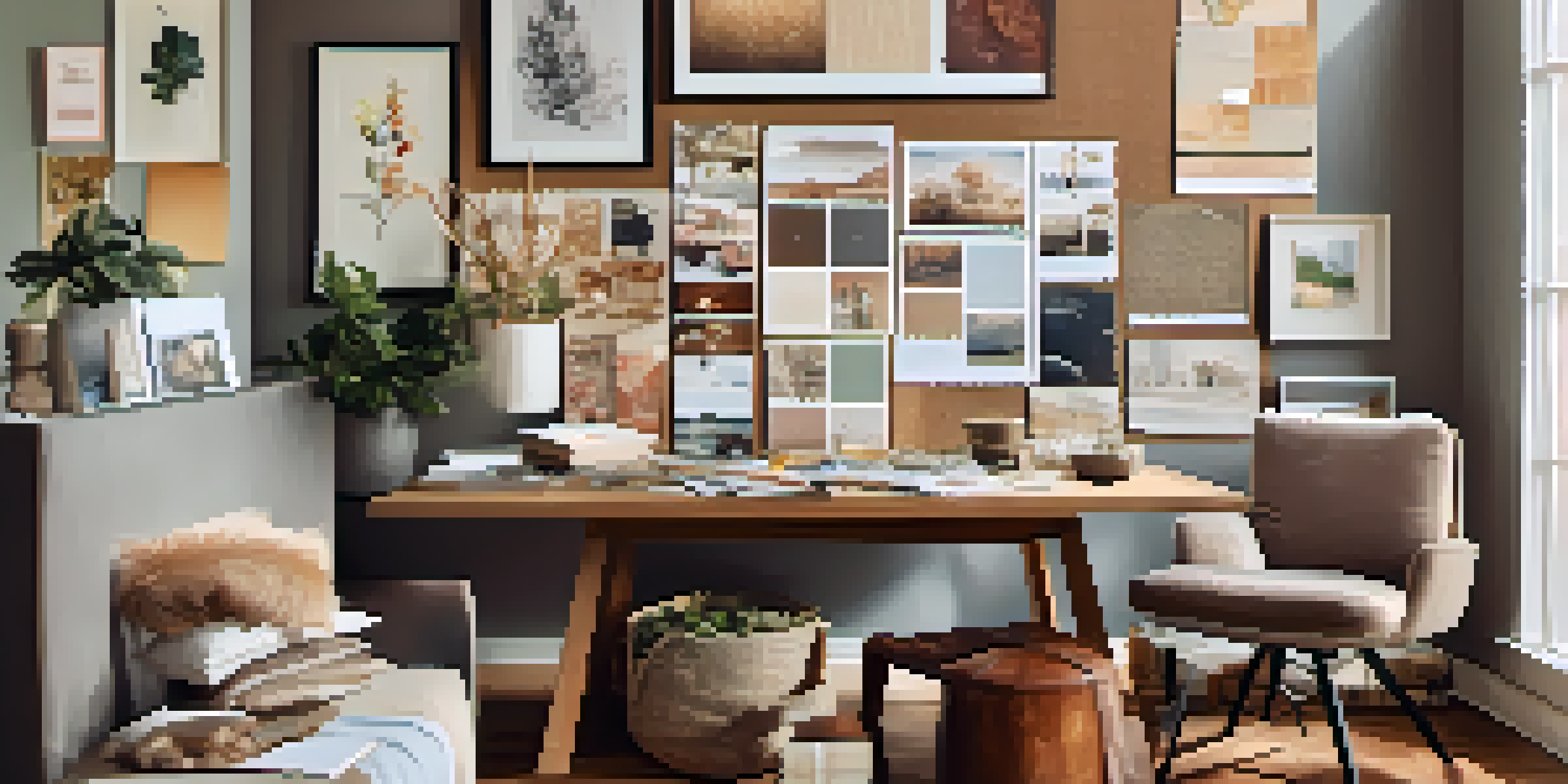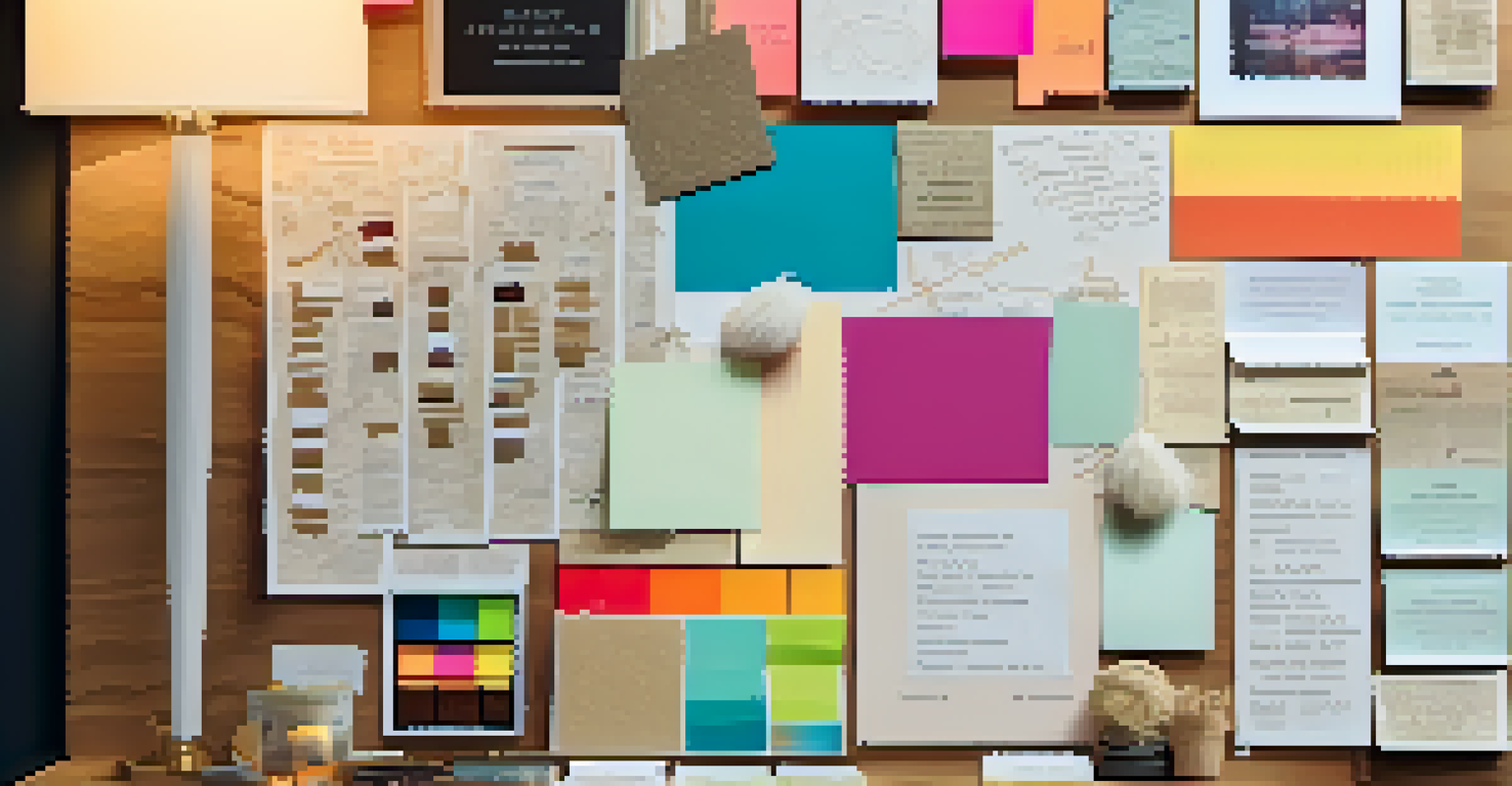How to Create a Home Renovation Vision Board for Inspiration

Understanding the Purpose of a Vision Board
A vision board is a powerful tool that helps you visualize your home renovation goals. It serves as a collection of images, colors, and ideas that inspire your design choices. By putting your aspirations into a tangible format, you can clarify what you truly want for your space.
A goal without a plan is just a wish.
Think of it like a mood board for your home. Just as artists use mood boards to gather inspiration for their projects, you can create a vision board to curate your renovation dreams. This visual representation can guide you throughout the renovation process, keeping you focused on your objectives.
Ultimately, your vision board should reflect your personal style and the atmosphere you want to create. Whether you're aiming for modern minimalism or cozy rustic charm, this board will become your roadmap, ensuring that your renovations align with your vision.
Gathering Inspiration for Your Vision Board
Start by collecting images and ideas that resonate with you. Browse through home design magazines, Pinterest boards, and social media platforms for inspiration. Pay attention to colors, textures, and layouts that catch your eye, and save them for your board.

As you gather materials, consider visiting local home improvement stores or design showrooms. These places often showcase the latest trends and styles that can spark new ideas. Take photos of spaces that inspire you, and don’t hesitate to jot down notes about what you love.
Create a Visual Guide for Renovation
A vision board serves as a tangible representation of your home renovation goals, helping you clarify your aspirations.
Remember, this is your personal vision board, so there are no strict rules. Feel free to mix and match various styles and elements that appeal to you. The goal is to create a collage that truly represents your dream renovation, capturing the essence of what you want to achieve.
Choosing the Right Format for Your Board
Vision boards can take many forms, from digital displays to physical collages. Decide which format best suits your style and how you plan to use the board. Digital boards are easily accessible and can be updated frequently, while physical boards can be displayed in your home for constant inspiration.
The future belongs to those who believe in the beauty of their dreams.
If you choose to go the traditional route, gather materials like poster boards, glue, scissors, and magazines. For a digital board, platforms like Canva or Pinterest can help you organize your ideas with ease. Each option has its advantages, so consider how you engage with inspiration.
Regardless of the format, ensure that your vision board is easily visible. If it’s a physical board, hang it in a place where you’ll see it daily, such as your office or kitchen. If it’s digital, set it as your desktop wallpaper or bookmark it for easy access.
Organizing Your Ideas on the Board
Once you have your materials ready, start arranging your images and ideas on the board. Group similar themes together, such as color palettes, furniture styles, and decor elements. This helps create a cohesive look and makes it easier to see how everything fits together.
Don't be afraid to play around with the layout. Sometimes, an unexpected combination can spark new ideas and enhance your vision. Consider using different shapes and sizes of images to create visual interest, ensuring your board is as dynamic as your renovation plans.
Gather Inspiration from Various Sources
Collect images and ideas from magazines, social media, and showrooms to curate a personalized vision board that reflects your style.
As you organize, keep your end goal in mind. Ask yourself how each element contributes to the overall feel of your space. This mindful approach will help you prioritize what truly resonates with your renovation vision.
Incorporating Color Schemes and Textures
Color schemes and textures play a crucial role in home design, and your vision board should reflect this. Consider the emotions and vibes you want to evoke in your space. Warm tones like reds and yellows create a cozy atmosphere, while cool blues and greens offer tranquility.
As you add colors to your board, think about how they interact with each other. Use swatches or paint samples to visualize how different shades will look in your space. This can be particularly helpful if you’re indecisive about which colors to choose.
Textures are just as important as colors in creating a well-rounded design. Include fabrics, materials, and finishes that appeal to you. Whether it’s the softness of a plush rug or the sleekness of polished wood, these tactile elements will further enhance your vision.
Setting Realistic Goals for Your Renovation
As you create your vision board, it’s essential to set realistic goals for your renovation project. Consider your budget, timeline, and the scope of your work. Having a clear understanding of these factors will ensure that your dreams align with what’s feasible.
Break down your renovation into manageable steps. For instance, if you're updating a kitchen, identify the key areas you want to focus on, such as cabinets, countertops, and appliances. This way, your vision board can reflect each phase of your project, helping you stay organized and motivated.
Set Realistic Goals for Your Project
Establish achievable objectives for your renovation by considering your budget and timeline while using the vision board as a guide.
Remember, while inspiration is important, practicality is key. Your vision board should inspire you but also guide you in making decisions that are achievable within your constraints.
Using the Board as a Continuous Source of Inspiration
Your vision board shouldn’t just sit on a wall or a screen; it should evolve with your renovation journey. As you progress, revisit your board regularly to remind yourself of your original vision. This can help keep your goals fresh in your mind and motivate you to stay on track.
If you discover new ideas or materials along the way, don’t hesitate to update your board. Adding new elements can reflect changes in your design preferences and ensure your vision board remains a true representation of your aspirations.

Ultimately, think of your vision board as a living document. It's there to support and guide you, ensuring that your home renovation journey is as inspiring as the finished product will be.